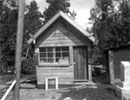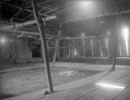|
|
||||
Harlan Ingersoll SmithHarlan Ingersoll Smith was born at Saginaw, Michigan in 1872. He attended the University of Michigan before pursuing a career in archaeology. Primarily self-trained, Smith gained significant practical experience working at the American Museum of Natural History. While there, he participated as archaeologist in the Jessup North Pacific Expedition from 1897 to 1899. In 1911, Harlan I. Smith joined the Geological Survey of Canada as head of its archeology division. This unit, along with the ethnography division later evolved into what is now the Canadian Museum of Civilization. Smith's early years as an archaeologist with the GSC were spent excavating and investigating potential archaeological sites in eastern Canada, Ontario and British Columbia. In 1920, he began what would become several years of ethnographic work in the Bella Coola Valley of British Columbia. Although he conducted archaeological investigations, his main focus was the documentation of the traditional uses of plants and animals, social organization and cultural traditions of the Nuxalk, Dakelh-ne and Chilcotin people. Besides archaeological mapping and the creation of an impressive inventory of archaeological sites in Canada, Harlan I. Smith was a pioneer in ethnographic film-making, anthropological photography and museum education. Smith was unique for his time, in that he tried to ensure that the people he photographed received copies of their portraits. He wrote extensive captions for his photographs that included detailed information on the subject, date, location, and often, camera angle. These images and associated information continue to be of use and importance to researchers. Harlan I. Smith died in Ottawa in 1940. View photographs documenting Harlan Smith's work in the Bella Coola Valley, British Columbia, between 1920 and 1924. |
Bibliography · Links · Credits · Index







